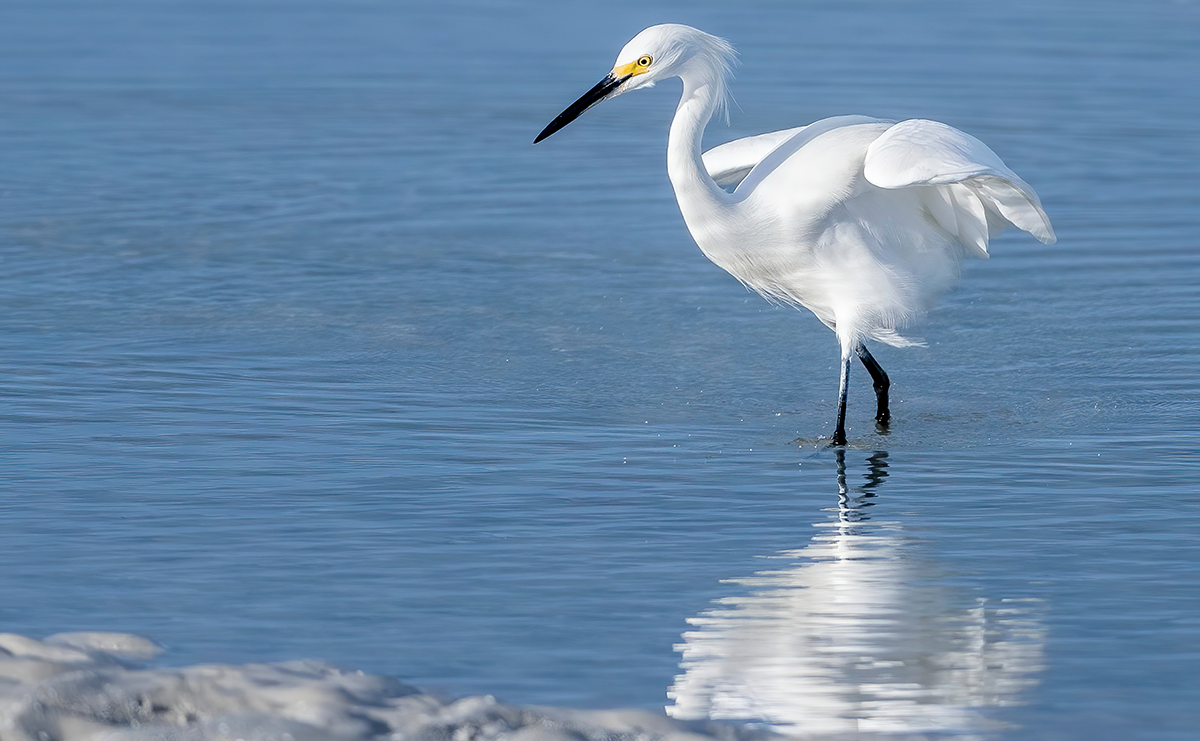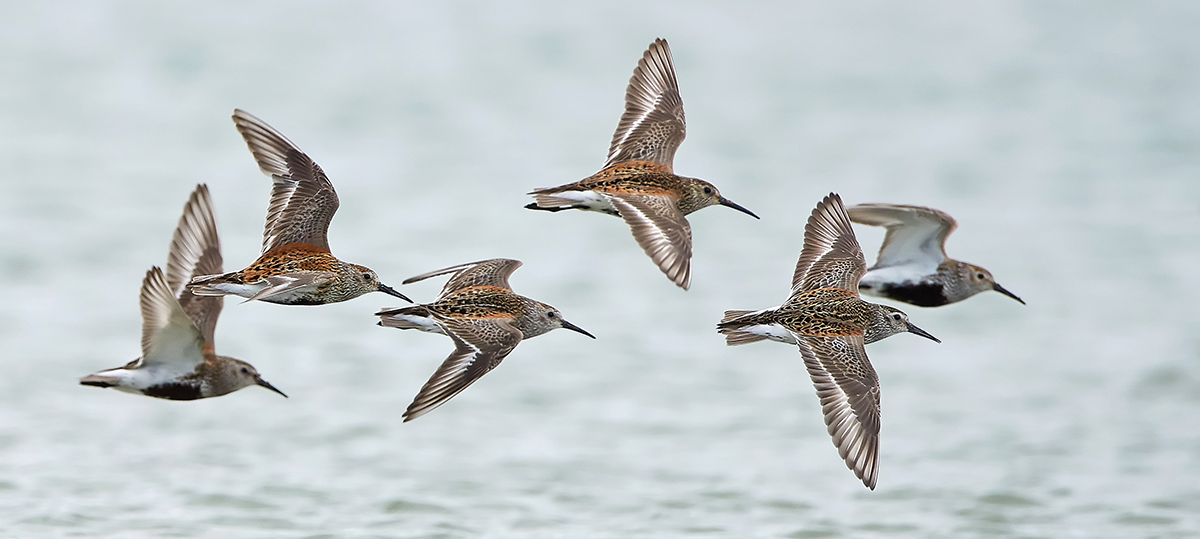
Birding
By Brian Morin
The hunt has begun. This is the time of year that birders search for species of waterbirds on or near our lakes and rivers, hoping to discover something unusual. During the summer, the number of species that breed here are few, but fall migration brings in flocks from across a broad swath of the north. They remain for weeks or longer, building up a reserve of energy before pushing on to their eventual winter home. Some waterfowl will even remain in the south along the Great Lakes, returning north to breed again the following spring.
There are numerous species of ducks, geese, grebes, and loons, as well as a variety of shorebirds and gulls. It can be a treasure trove of species with the tantalizing prospect of finding a rare gem among them.
Because parts of Ontario have an abundance of water, with major rivers, an extensive network of lakes and of course the Great Lakes themselves, it is possible to find a good variety of subjects to observe. Most birds, however, tend to concentrate at strategic locations. Key features are the Ottawa and St. Lawrence rivers and the lower Great Lakes. Ottawa, Ingleside, Kingston harbor, provincial parks along Lake Ontario, and the entire waterfront from Toronto to Niagara serve as major attractions for both birds and birders.
At this time of year, weather becomes unstable. Periodic cold fronts from the north mixing with warm air from the south generate turbulent conditions. This can be good for birding because it concentrates migrants and may blow-in something unusual. We are also in the season of tropical storms with the remnants of hurricanes swinging by on their way to the Atlantic. We rarely get extreme weather, which is a good thing, but even a strong blow can present interesting opportunities.

There can actually be an inverse relationship between the weather and the birds; the more unfavourable the conditions, the more promising the search becomes. That doesn’t mean you have to be out in the thick of it, but in the days immediately following a storm’s passage, you never know what you might find. Some will ride the leading edge of a storm, setting down in safe areas until the conditions pass while others endure the worst of it and drop tired and hungry, sometimes even in yards and on city streets. The Ottawa Valley Wild Bird Care Centre has many stories to tell of just such occurrences.
Storms that move up the East Coast or head north from the Gulf of Mexico show the best promise. We may be treated to species that are normally found in more tropical settings such as a Snowy Egret, ibis or a frigatebird. Seabirds like petrels, murres, shearwaters, Gannets and kittiwakes have arrived along the shores of Lake Erie and Lake Ontario when strong Atlantic storms pass by. Even inland areas such as Lanark County and city streets in Ottawa have periodically reported Atlantic seabirds. Imagine the expression of one birder when he spotted a huge Gannet fly over while driving in traffic on Highway 417 in the heart of Ottawa. It can certainly generate a lot of excitement.
Believe it or not, some of my favourite memories were time spent in rough weather along wind-whipped Lake Ontario and Lake Erie watching for something unusual to fly by. I was dressed for the conditions and my equipment is waterproof but it still takes a degree of fortitude to tough it out. The results were not always favourable, but every so often, I’d strike pay dirt and a bird of great interest would pass by. Birders can be a tough lot.

While rarities are always desirable, even seeing concentrations of regular visitors is a treat. From mid October into December, large flocks of Snow Geese feed in fields 30 minutes east of Ottawa near Highway 417 before heading to coastal Delaware for the winter. There are tens of thousands of Canada Geese as well, but they tend to be more spread out across the region.
Diving ducks like Redheads, Ring-necked Ducks and scaup gather by the thousands along the St. Lawrence near Ingleside, as well as Kingston, Toronto, Long Point and Rondeau Provincial Parks. They may be in tight flocks as they dive for a variety of aquatic goodies including vegetation, molluscs, fish and insects. Closer to shore, you will also spot the dabblers, birds like Mallards and Gadwall that tip upside down to feed on vegetation.
Good numbers of gulls can be found near Cornwall and there are numerous shorebirds at key ponds in the southwest and along the beaches of Presqu’ile Provincial Park near Brighton. In fact, there are so many areas to check at this time of the year, it is hard to know where to go next. What a time to be a birder!
Brian Morin is the publisher of Ontario Birding News, a newsletter for birding enthusiasts. He has been actively involved in watching and photographing birds in Ontario for more than 40 years





